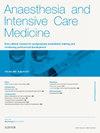眼科手术的全身麻醉
IF 0.3
Q4 ANESTHESIOLOGY
引用次数: 0
摘要
大多数眼科手术是在局部或局部麻醉下进行的,有或没有静脉镇静。然而,在某些情况下,如局部麻醉过敏或患者无法配合或平躺或静止时,全身麻醉是必要的。眼科手术的患者通常是患有多种合并症的老年人,如糖尿病和高血压。患有罕见遗传综合征的患者可能会出现眼部手术。因此,充分的术前评估和准备将减少围手术期并发症。全麻的目标是顺利的诱导和出现,稳定的眼压(IOP)和眼球运动。这些可以通过静脉注射和吸入剂的组合来实现,有或没有肌肉松弛剂和阿片类药物。使用喉罩气道的优点是在插入时引起较小的IOP上升,并且在出现时减少咳嗽。异丙酚加瑞芬太尼全静脉麻醉具有术后恶心呕吐(PONV)减少、气道干预应激反应降低、恢复快、苏醒顺利等优点。一些眼科手术需要特别考虑,例如斜视和玻璃体视网膜手术涉及牵引直肌,产生较高的心眼反射和PONV发生率。大多数眼科手术产生轻度到中度的疼痛,非阿片类镇痛药是适用的。术中局部和局部麻醉减少了术后疼痛和阿片类药物的需求。开放球损伤和饱胃对防止IOP升高和保护气道提出了独特的挑战。本文章由计算机程序翻译,如有差异,请以英文原文为准。
General anaesthesia for ophthalmic surgery
The majority of ophthalmic surgeries are performed as day cases under topical or regional anaesthesia with or without intravenous sedation. However, general anaesthesia is necessary in certain circumstances e.g. local anaesthetic allergy or patients who are unable to cooperate or to lie flat or still. Patients for ophthalmic surgery are frequently elderly with multiple comorbidities, such as diabetes and hypertension. Patients with rare genetic syndromes may present for eye surgery. Therefore adequate preoperative evaluation and preparation will minimize perioperative complications. The goals of general anaesthesia are smooth induction and emergence, with stable intra-ocular pressure (IOP) and akinesia of the globe. These can be achieved with a combination of intravenous and inhalational agents with or without muscle relaxants and opiates. Use of the laryngeal mask airway has the advantage of causing a smaller rise in IOP on insertion and less coughing on emergence. Total intravenous anaesthesia with propofol and remifentanil has the advantages of causing less postoperative nausea and vomiting (PONV), reduced stress response to airway intervention, rapid recovery and smooth emergence. Some eye procedures require special consideration, for example, strabismus and vitreoretinal surgery involves traction of the rectus muscles producing a higher incidence of oculocardiac reflex and PONV. Most ophthalmic surgery produces mild to moderate pain amenable to non-opioid analgesics. Intraoperative topical and regional anaesthesia reduce postoperative pain and opiate requirement. Open globe injury and a full stomach present unique challenges to prevent increase in IOP as well as protecting the airway.
求助全文
通过发布文献求助,成功后即可免费获取论文全文。
去求助
来源期刊

Anaesthesia and Intensive Care Medicine
ANESTHESIOLOGY-
CiteScore
0.50
自引率
0.00%
发文量
152
期刊介绍:
Anaesthesia and Intensive Care Medicine, an invaluable source of up-to-date information, with the curriculum of both the Primary and Final FRCA examinations covered over a three-year cycle. Published monthly this ever-updating text book will be an invaluable source for both trainee and experienced anaesthetists. The enthusiastic editorial board, under the guidance of two eminent and experienced series editors, ensures Anaesthesia and Intensive Care Medicine covers all the key topics in a comprehensive and authoritative manner. Articles now include learning objectives and eash issue features MCQs, facilitating self-directed learning and enabling readers at all levels to test their knowledge. Each issue is divided between basic scientific and clinical sections. The basic science articles include anatomy, physiology, pharmacology, physics and clinical measurement, while the clinical sections cover anaesthetic agents and techniques, assessment and perioperative management. Further sections cover audit, trials, statistics, ethical and legal medicine, and the management of acute and chronic pain.
 求助内容:
求助内容: 应助结果提醒方式:
应助结果提醒方式:


